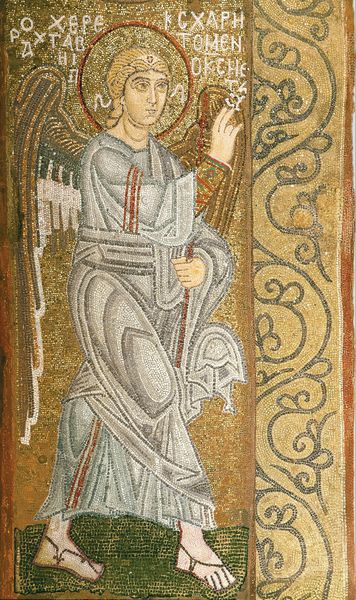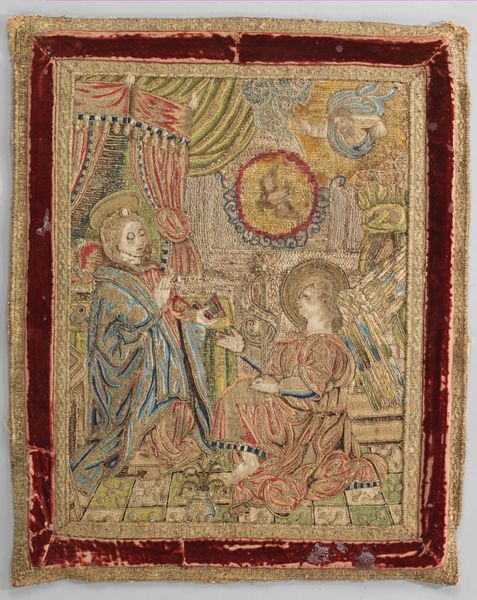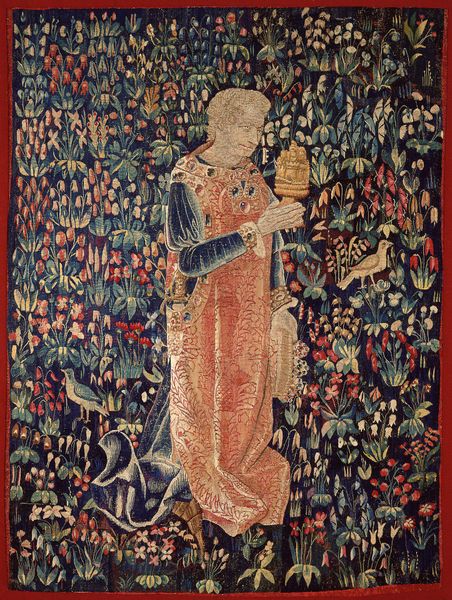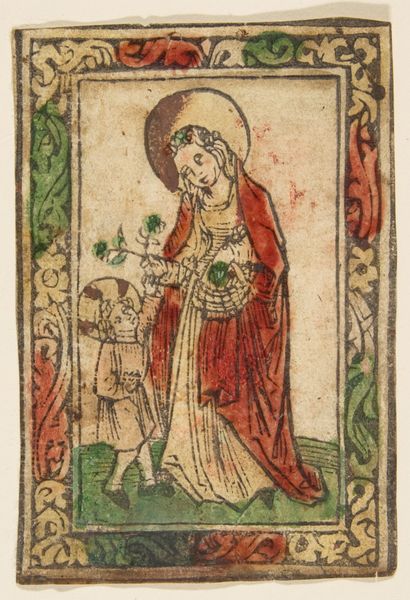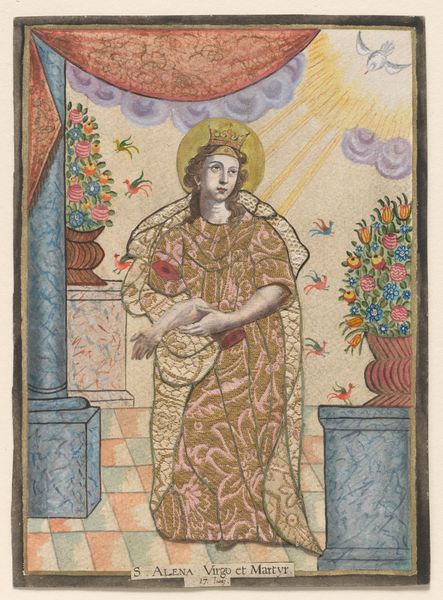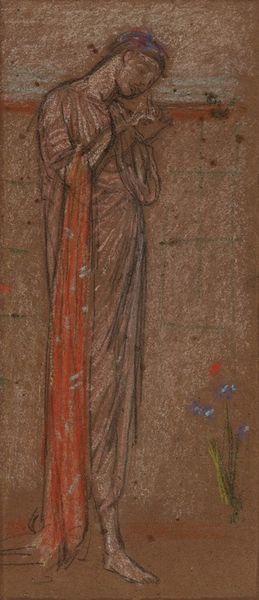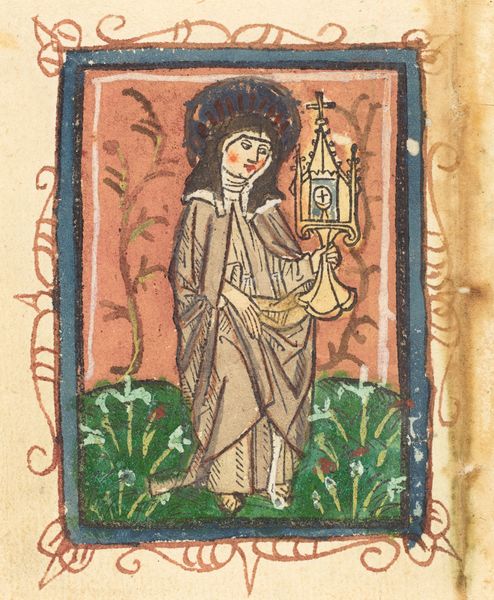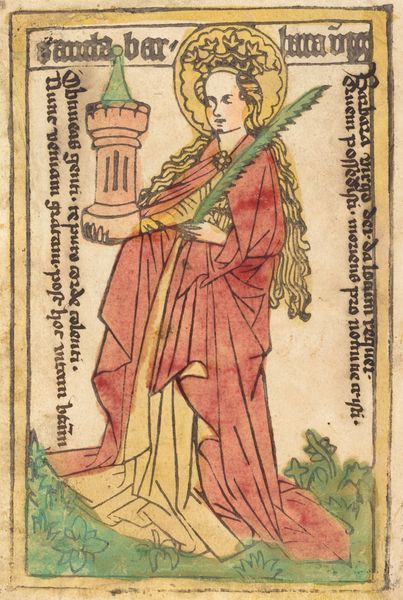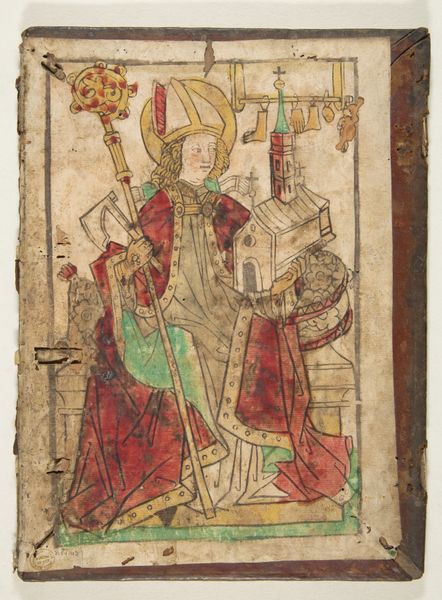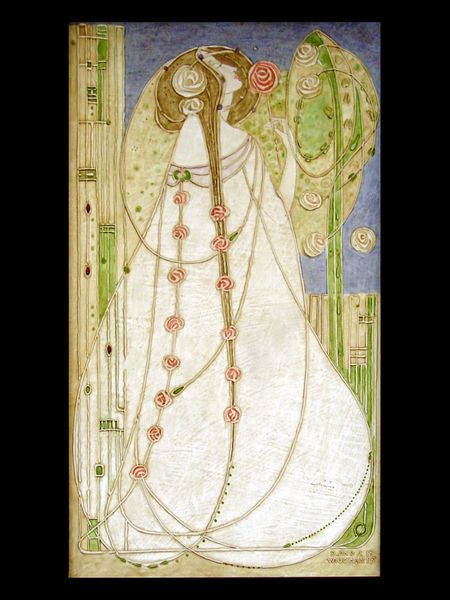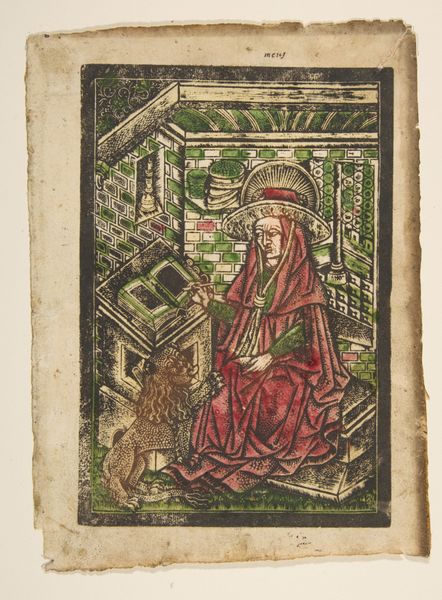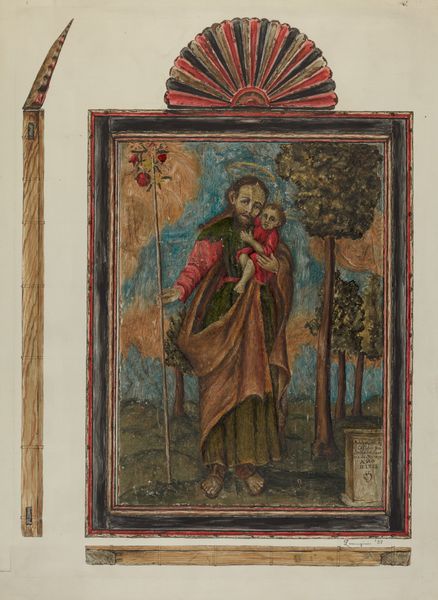
drawing, fibre-art, silk, textile
#
portrait
#
drawing
#
fibre-art
#
medieval
#
silk
#
textile
#
figuration
#
coloured pencil
Dimensions: 12 3/4 x 7 3/8 in. (32.39 x 18.73 cm) (image)
Copyright: Public Domain
Editor: This artwork, titled "St. John the Baptist," is dated from around 1400 to 1450. It is attributed to an anonymous artist and held at the Minneapolis Institute of Art. What strikes me most is the intricate detail achieved through textiles like silk and fibre-art. What can you tell me about its design? Curator: Observe the deliberate application of stitches to construct form and texture. Consider the carefully plotted chromatic range which facilitates contrast and definition. Note too the formalist technique in outlining and infilling that lend themselves well to representing medieval Christian subjects. Do you see how the linear design and flat application of color place this artwork within a tradition of pattern-making and formal figuration? Editor: Yes, I see the flat perspective, and I was wondering about that! I find the background pattern quite bold. Why do you think they chose such a complex design, rather than a more straightforward color? Curator: Precisely. Note how the tessellating pattern creates a dynamic counterpoint to the figure, not only adding depth but further emphasizing the figure as a symbol. The artist, even with simple techniques like colour contrasts, uses these to create layers of meaning and direct the gaze. Editor: I appreciate how the textile medium brings out different qualities of this artwork than if it had been created on wood or paper, though. Are there other components that add special interest to this particular piece? Curator: The stylized composition and materials themselves convey as much information as the depiction of the saint. The limitations of textile art demanded creative formal decisions that shaped how viewers engaged with religious figures at the time. By considering materials and design, it grants insight to the world it came from. Editor: That’s an interesting approach. I never thought about the constraints informing the piece so much. I have a much better grasp of it now, considering the medium and pattern. Thank you! Curator: It was a pleasure to consider these visual intricacies with you, too.
Comments
minneapolisinstituteofart about 2 years ago
⋮
Opus anglicanum is an embroidery style that originated in England in the 11th century but became popular throughout Europe during the medieval period. It is characterized by the use of couched metallic threads combined with silk surface stitches. This type of embroidery was primarily used for religious purposes on copes, chasubles and altar frontals and was executed in professional workshops and by nuns in convents. This image of St. John the Baptist was likely part of an orphery, an embroidered band on an ecclesiastical vestment or hanging. Medieval artists used a variety of iconographic conventions to clearly identify the individuals depicted on textiles, illuminated manuscripts, or paintings. John the Baptist was typically portrayed dressed in animal skins, holding a lamb with a nimbus and cross, symbolic of Christ, the lamb of God.
Join the conversation
Join millions of artists and users on Artera today and experience the ultimate creative platform.
